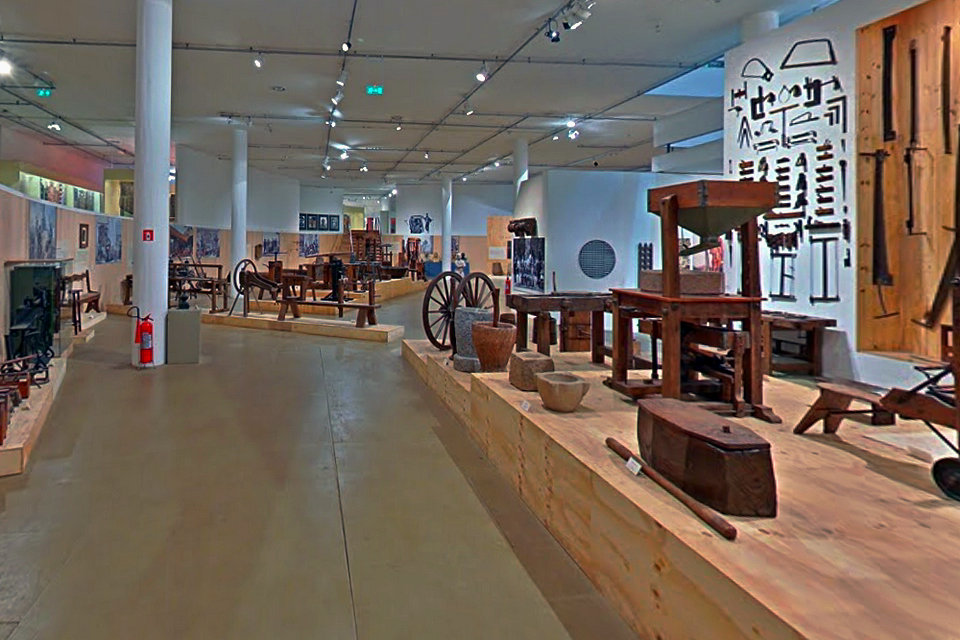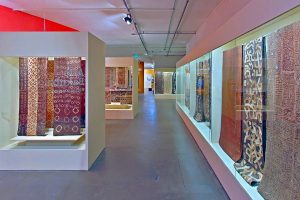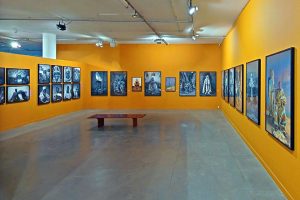The exhibition “Art, Adornment, Design and Technology in the Time of Slavery”, celebrate Black Awareness Day that year, the exhibition brings together more than 70 objects from urban and rural crafts, composing a set that highlights the contributions of blacks to science and technology in Brazil. The visitor can check sugar mills, tobacco leaf presses, polishing tables, corn mills, blacksmith forges, joiner’s planes, among other objects that refer to the 18th and 19th centuries.
In the period of slavery in Brazil, enslaved Africans and their descendants were primarily responsible for carrying out works that are at the basis of Brazilian society as it is today. Agriculture, livestock and mining from the beginning were strongly marked by the African hand and later by the Afro-Brazilian hand.
How these jobs were done? Have you considered the technologies used to plant, harvest, process sugar cane and coffee, for example? What about the extraction and treatment of gold and precious stones? And the complicated clothes worn by men and women in times of the Empire: how were clothes full of pleats and ruffles washed, dried and ironed? In addition to the human hand, imagine the number of tools and instruments that were needed in this period of history.
“For a long time, it was interesting for those who wrote the History of Brazil to reinforce a suffering and ‘re-enacted’ past in order to crystallize images of an alleged subalternity. Therefore, this exhibition rewrote the History of Technology in Brazil, as it rescued the Nation being built by the hands of Africans, and thus brought a positive image of the Negro, fundamental for us to proudly assume the presence in our identity “, says the curatorial director Emanoel Araujo.
Located in the central space of the museum, the exhibition served as a backdrop for the soap opera Sangue Bom and the journalistic program Antena Paulista, in addition to other television attractions.
To learn more about a little-known side of Brazilian history, from the exhibition Art, adornment, design, and technology in times of slavery. In this material we suggest a route, but you can create your own itineraries.
Exhibition
During the period of slavery in Brazil, enslaved Africans and their descendants were primarily responsible for carrying out works that are at the base of Brazilian society as it is today. Agriculture, livestock and mining from the beginning were strongly marked by the African hand and later by the Afro-Brazilian hand. The Afro Brasil Museum invites you to learn a little about one of our most interesting permanent exhibitions. See some items from our collection that showcases the great repertoire of technology brought by African peoples since the beginning of Brazilian colonization.
Highlights
Corn mill (1800)
The first effective way of exploiting the land and the people here was the trade of wood extracted by the Indians and exchanged with the Portuguese for the most varied objects and utensils. Abundant and with great qualities, wood soon became the main raw material for tools and equipment manufactured in Brazil, in a rural or urban environment.
The use of slaves in the functions of joinery and carpentry was a common factor in the Colony. Slave contractors and owners encouraged their learning in the hope of profiting from their rents. Thus, many blacks became official carpenters and carpenters in the Colony.
Butter press (1800)
Have you considered the technologies used to plant, harvest, process sugar cane and coffee, for example? What about the extraction and treatment of gold and precious stones? And the complicated clothes worn by men and women in times of the Empire: how were clothes full of pleats and ruffles washed, dried and ironed? In addition to the human hand, imagine the number of tools and instruments that were needed in this period of history.
Scapular of Our Lady of Mount Carmel (1800)
Crioula Jewels: Afro-Brazilian visual communication
The use of ornaments is one of the immediate ways of expressing cultural values in a symbolic and easily communicable language within the user group. Creole jewels are beautiful examples of African and Afro-Brazilian technology and originality. The fact that the indigenous tradition does not use metallurgy and metal smelting determined the model of construction of its jewelry. the so-called “creole” culture (developed in Brazil, but with the ancestry of different African ethnicities) had originally supported the production and technology of metalwork in the country, generating a strong impact on the design of Brazilian jewelry.
Afro Brasil Museum
Museu Afro Brasil is a public institution, held by São Paulo State Secretariat for Culture and managed by Associação Museu Afro Brasil – Organização Social de Cultura (Museu Afro-Brasil Association – Social Organization for Culture)
It aims to be a contemporary museum where the black people can be recognized.
Over than 6,000 works highlight the importance of African people in the formation of Brazilian culture, heritage and identity as known nowadays. Also, it offers a celebration of the art and accomplishments of the Africans and Afro-Brazilians.
The Collection is considered the largest Afro – American in American with more than 6,000 masterpieces, sculptures, documents, engravings, ceramics, paintings, contemporary arts, jewelry, objects, reliefs, photographs and textiles.
Over than 70% of the collection is in the long term exhibition, portraying mainly Brazil, some countries from the African Continent, Cuba, Haiti and the United States.








